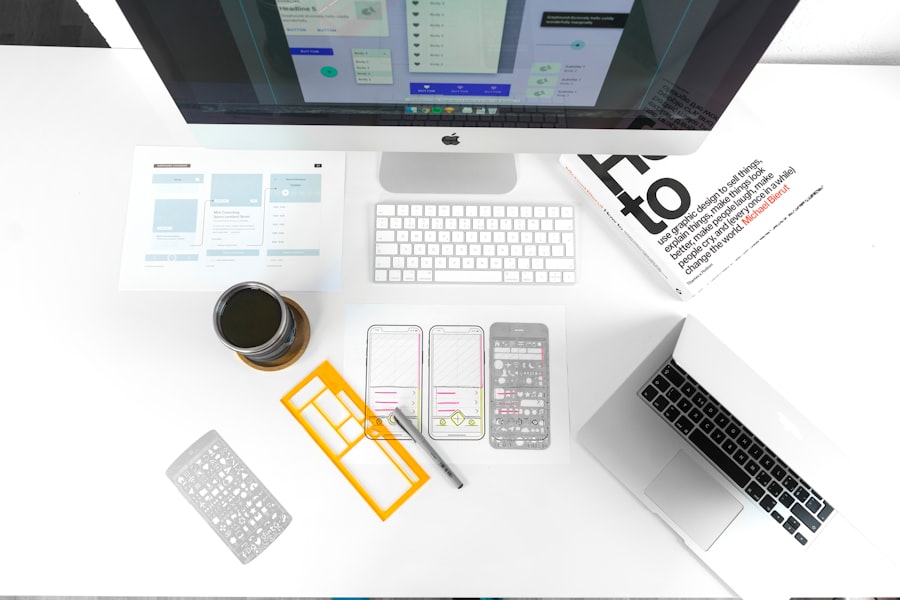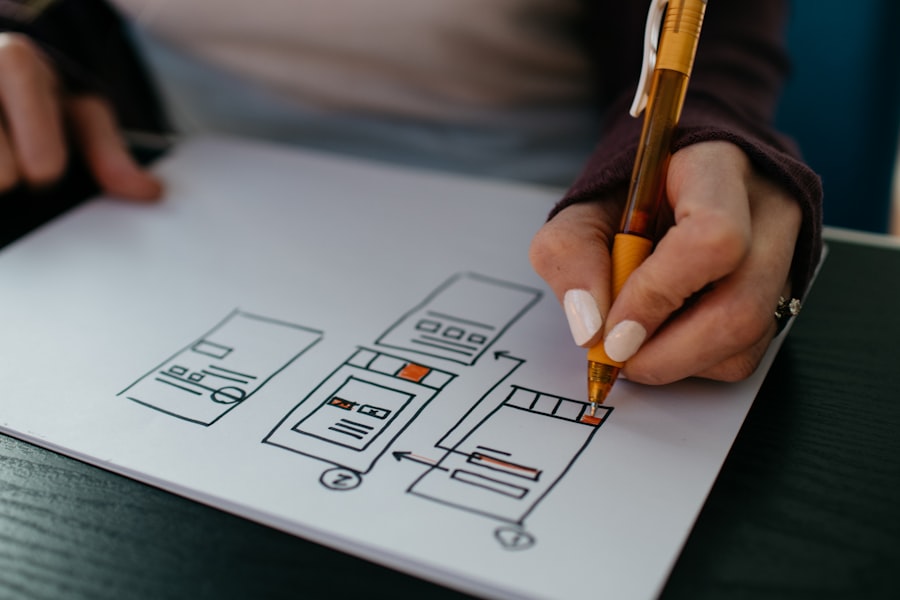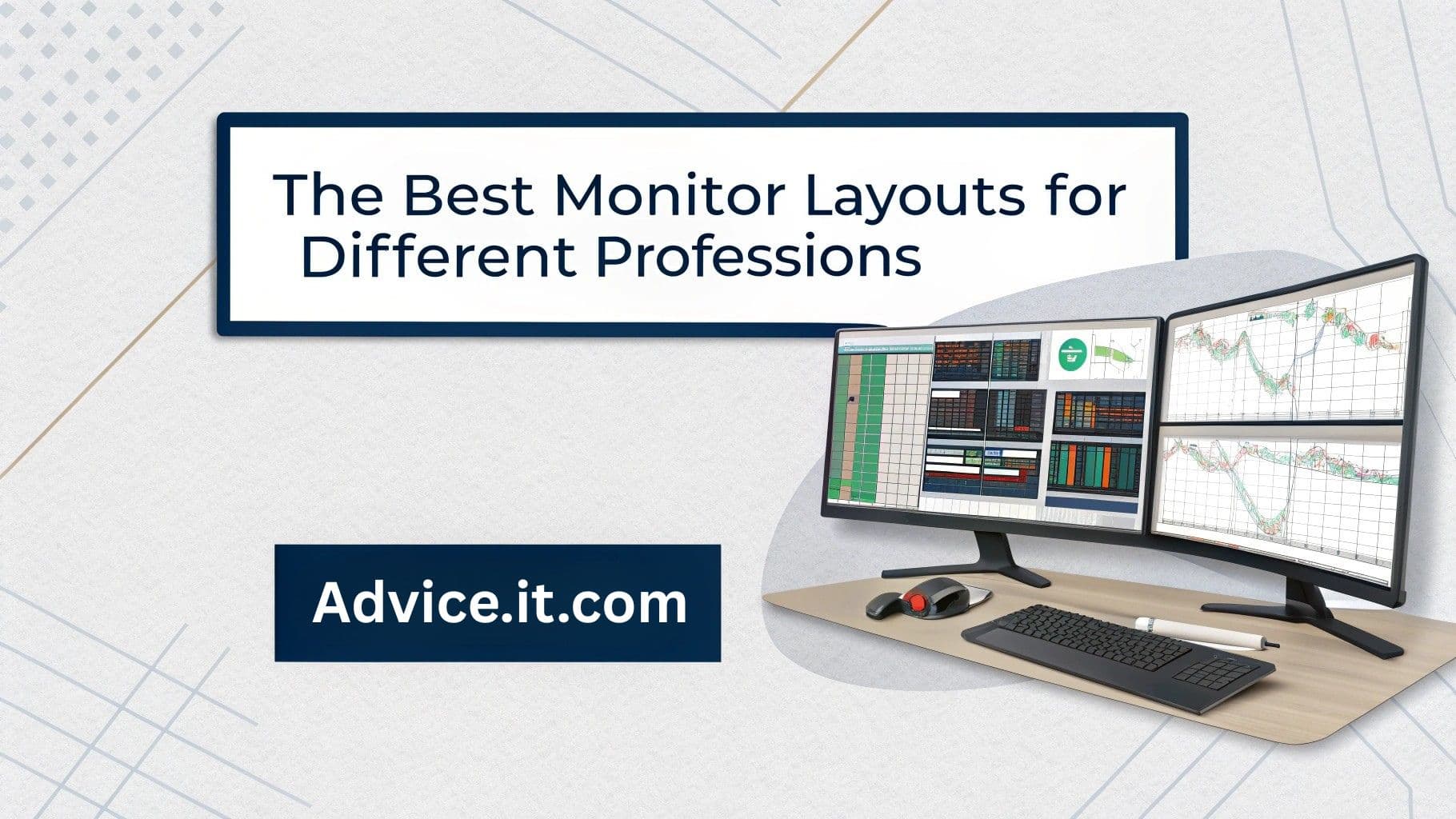In today’s fast-paced digital world, the way I arrange my workspace can significantly impact my productivity and efficiency. The layout of my monitors is not just a matter of aesthetics; it plays a crucial role in how I interact with my tasks and manage my time. Different professions require distinct approaches to monitor layouts, as the nature of the work often dictates how information is processed and displayed.
Whether I am a graphic designer, a financial analyst, or a healthcare professional, understanding the importance of monitor layouts can enhance my workflow and ultimately lead to better outcomes. As I delve into the various professions, I realize that each field has unique demands that can be met through thoughtful monitor arrangements. For instance, creative professionals may benefit from expansive screen real estate to showcase their designs, while data analysts might require multiple screens to track real-time information.
By exploring these different needs, I can gain insights into how to optimize my own workspace for maximum productivity, regardless of my profession.
Graphic Design and Video Editing: Optimizing Monitor Layouts for Creative Work
When I think about graphic design and video editing, the first thing that comes to mind is the need for vibrant colors and high-resolution displays. As a creative professional, I often find myself juggling multiple applications simultaneously—design software, video editing tools, and reference materials. To optimize my workflow, I have learned that a dual or even triple monitor setup can be incredibly beneficial.
By dedicating one screen to my primary design software and another to reference images or color palettes, I can streamline my creative process and reduce the time spent switching between windows. Moreover, the arrangement of my monitors can also influence my creative output. I prefer to position my primary monitor directly in front of me, ensuring that I have an unobstructed view of my work.
The secondary monitor is often angled slightly to the side, allowing me to glance at it without losing focus on my main task. This layout not only enhances my efficiency but also fosters a more immersive creative environment. With the right monitor setup, I can dive deeper into my projects, experiment with new ideas, and ultimately produce higher-quality work.
Financial Analysis and Trading: Utilizing Multiple Monitors for Data Analysis and Market Monitoring

In the realm of financial analysis and trading, the ability to monitor multiple streams of data in real-time is paramount. As someone who has dabbled in trading, I understand the importance of having a well-organized monitor layout that allows me to keep an eye on market trends, news feeds, and analytical tools simultaneously. A multi-monitor setup is almost essential in this field; it enables me to track various stocks or commodities without constantly switching between tabs or applications.
I often find that dedicating one screen to live market data while using another for analytical tools provides me with a comprehensive view of the financial landscape. This arrangement allows me to make informed decisions quickly, as I can analyze trends while keeping an eye on breaking news that may impact market conditions. Additionally, having a third monitor for communication tools ensures that I stay connected with colleagues or trading partners without disrupting my analytical workflow.
This strategic use of multiple monitors not only enhances my efficiency but also gives me a competitive edge in the fast-paced world of finance.
Programming and Software Development: Organizing Code and Debugging Tools on Multiple Screens
As a programmer, I often find myself immersed in lines of code for hours on end. The complexity of software development necessitates a well-organized workspace that allows me to access various tools and resources seamlessly. My experience has shown me that utilizing multiple monitors can significantly enhance my coding efficiency.
By dedicating one screen to my code editor and another to debugging tools or documentation, I can streamline my workflow and minimize distractions. In practice, I typically arrange my monitors so that my primary coding environment is front and center, while supplementary screens display relevant resources such as API documentation or testing environments. This layout allows me to reference materials without interrupting my coding flow.
Furthermore, having a separate screen for version control systems enables me to manage changes effectively while keeping track of project progress. By optimizing my monitor layout in this way, I can focus on writing clean code and debugging issues more efficiently.
Healthcare and Medical Professions: Designing Monitor Layouts for Electronic Health Records and Patient Monitoring
In the healthcare sector, the organization of monitor layouts can have profound implications for patient care and safety. As someone who has observed medical professionals at work, I recognize that efficient access to electronic health records (EHR) is crucial for making informed decisions about patient care. A well-designed monitor setup can facilitate quick access to vital information while minimizing errors that could arise from miscommunication or oversight.
In practice, healthcare professionals often benefit from dual-monitor setups where one screen displays patient records while the other shows diagnostic tools or imaging results. This arrangement allows for a comprehensive view of patient data without requiring constant toggling between applications. Additionally, having a dedicated monitor for real-time patient monitoring systems ensures that healthcare providers can respond promptly to any changes in a patient’s condition.
By thoughtfully designing monitor layouts in medical settings, professionals can enhance their workflow and ultimately improve patient outcomes.
Education and Online Teaching: Creating Effective Monitor Layouts for Presentations and Interactive Learning

As an educator in today’s digital age, I have come to appreciate the importance of effective monitor layouts for online teaching and presentations. The shift towards remote learning has necessitated new strategies for engaging students while delivering content effectively. A well-organized workspace can make all the difference in creating an interactive learning environment that fosters student participation.
In my experience, using multiple monitors during online classes allows me to present materials on one screen while keeping an eye on student interactions on another. This setup enables me to respond to questions or comments in real-time without losing focus on the lesson at hand. Additionally, having a third monitor dedicated to supplementary resources—such as videos or interactive quizzes—can enhance the learning experience by providing students with diverse content formats.
By customizing my monitor layout for online teaching, I can create a more engaging and productive learning environment for my students.
Gaming and Esports: Maximizing Monitor Layouts for Immersive Gaming Experiences
As an avid gamer, I understand that the right monitor layout can elevate my gaming experience to new heights. In competitive gaming and esports, every millisecond counts; therefore, having multiple monitors can provide me with a strategic advantage over opponents. My primary gaming monitor is typically positioned directly in front of me for optimal focus, while additional screens display game statistics or communication tools.
I often find that using a secondary monitor for tracking live game stats or streaming chat enhances my overall gaming experience. This layout allows me to stay engaged with my audience while maintaining focus on gameplay without constantly switching between windows. Furthermore, having a dedicated screen for social media or community interactions enables me to build connections with fellow gamers seamlessly.
By maximizing my monitor layout for gaming purposes, I can immerse myself fully in the virtual world while staying connected with the gaming community.
Tips for Customizing Monitor Layouts for Productivity and Efficiency in Any Profession
In conclusion, customizing monitor layouts is essential for enhancing productivity and efficiency across various professions. Regardless of whether I am involved in creative work, financial analysis, programming, healthcare, education, or gaming, thoughtful organization of screens can significantly impact my workflow. To optimize my workspace effectively, I have learned several key strategies that apply universally.
First and foremost, it’s crucial to assess my specific needs based on the tasks I perform regularly. Understanding which applications or tools require immediate access will guide me in arranging my monitors effectively. Additionally, ensuring that my primary screen is positioned at eye level helps reduce strain and maintain focus during long hours of work or play.
Finally, experimenting with different layouts can lead to discovering what works best for me personally; there’s no one-size-fits-all solution when it comes to monitor arrangements. By taking these factors into account and customizing my monitor layout accordingly, I can create an environment that fosters productivity and efficiency in any profession I choose to pursue.
FAQs
What are the best monitor layouts for different professions?
The best monitor layouts for different professions depend on the specific needs and tasks of each profession. For example, a graphic designer may benefit from a dual monitor setup to have more screen real estate for designing, while a stock trader may benefit from a multi-monitor setup to monitor multiple stocks simultaneously.
What is the best monitor layout for a graphic designer?
A graphic designer may benefit from a dual monitor setup, with one monitor dedicated to the design workspace and the other for tools, references, and communication.
What is the best monitor layout for a stock trader?
A stock trader may benefit from a multi-monitor setup, with multiple monitors displaying different stocks, market data, news, and trading platforms for efficient monitoring and trading.
What is the best monitor layout for a programmer?
A programmer may benefit from a dual monitor setup, with one monitor for coding and the other for reference materials, documentation, and communication tools.
What is the best monitor layout for a video editor?
A video editor may benefit from a dual monitor setup, with one monitor dedicated to the video editing workspace and the other for timeline, tools, and previewing the edited video.
What is the best monitor layout for a financial analyst?
A financial analyst may benefit from a multi-monitor setup, with multiple monitors displaying financial data, analysis tools, news, and communication platforms for comprehensive financial analysis.
What is the best monitor layout for a data analyst?
A data analyst may benefit from a dual monitor setup, with one monitor for data analysis and visualization and the other for data sources, documentation, and communication tools.

